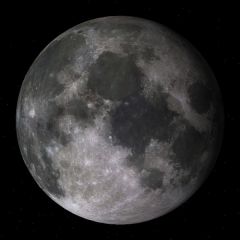Difference between revisions of "Earth spaceports in Orbiter2016"
Jump to navigation
Jump to search
(Infobox Earth.) |
(Moon) |
||
| Line 1: | Line 1: | ||
| − | {| cellpadding="2" cellspacing="0" style="margin:25px 0 0 10px; border:3px solid lightsteelblue;width:250px; font-size:90%; font-family:'Arial','Helvetica'; float: right; clear: right;" | + | |
| − | !bgcolor="lightsteelblue" colspan="2" align="center" | | + | |
| + | {| cellpadding="2" cellspacing="0" style="margin:25px 0 0 10px; border:3px solid lightsteelblue;width:250px; font-size:90%; font-family:'Arial','Helvetica'; float: right; clear: right;"Moon in Orbiter" | ||
| + | !bgcolor="lightsteelblue" colspan="2" align="center" |Moon | ||
|- | |- | ||
| − | |colspan="2" align="center"|[[Image: | + | |colspan="2" align="center"|[[Image:MoonScrshot.jpg|240px]] |
|- | |- | ||
| − | |colspan="2" align="center"|''' | + | |colspan="2" align="center"|'''Moon in Orbiter''' |
|- | |- | ||
!bgcolor="lightsteelblue" colspan="2"|Designation | !bgcolor="lightsteelblue" colspan="2"|Designation | ||
|- | |- | ||
| − | |width="30%"|Name||align="right" width="30%"| | + | |width="30%"|Name||align="right" width="30%"|Moon |
|- | |- | ||
| − | |width="30%"|Reference body||align="right" width="30%"| | + | |width="30%"|Reference body||align="right" width="30%"|Earth |
| − | |||
| − | |||
|- | |- | ||
!bgcolor="lightsteelblue" colspan="2"|Physical parameters* | !bgcolor="lightsteelblue" colspan="2"|Physical parameters* | ||
|- | |- | ||
| − | |width="30%"|Mass||align="right" width="50%"| | + | |width="30%"|Mass||align="right" width="50%"|7.348×10<sup>22</sup> kg |
| − | |||
| − | |||
| − | |||
| − | |||
| − | |||
| − | |||
| − | |||
| − | |||
| − | |||
| − | |||
| − | |||
| − | |||
|- | |- | ||
| − | + | |width="30%"|Mean Radius||align="right" width="50%"|1.738×10<sup>6</sup> m | |
|- | |- | ||
| − | |width="30%"| | + | |width="30%"|Gravitational moments||align="right" width="50%"|n/a |
|- | |- | ||
| − | |width="30%"| | + | |width="30%"|Siderial day||align="right" width="30%"|2.361×10<sup>6</sup> s |
|- | |- | ||
| − | |width="30%"| | + | |width="30%"|Orbital period||align="right" width="30%"|2.324×10<sup>6</sup> s<br>(26.898 days) |
|- | |- | ||
| − | |width="30%"| | + | |width="30%"|Obliquity of ecliptic||align="right" width="30%"|1.54° |
|- | |- | ||
| − | |width="30%"| | + | |width="30%"|Atmosphere||align="right" width="30%"|No |
|- | |- | ||
!bgcolor="lightsteelblue" colspan="2"|Osculating elements (ecliptic frame)* | !bgcolor="lightsteelblue" colspan="2"|Osculating elements (ecliptic frame)* | ||
|- | |- | ||
| − | |width="30%"|Semi-major axis||align="right" width="30%"| | + | |width="30%"|Semi-major axis||align="right" width="30%"|3.8074×10<sup>8</sup> m |
| − | |||
| − | |||
| − | |||
| − | |||
| − | |||
| − | |||
| − | |||
| − | |||
| − | |||
| − | |||
| − | |||
| − | |||
| − | |||
| − | |||
|- | |- | ||
| − | |width="30%"| | + | |width="30%"|Eccentricity||align="right" width="30%"|0.069266 |
|- | |- | ||
| − | |width="30%"| | + | |width="30%"|Inclination||align="right" width="30%"| 5.06° |
|- | |- | ||
|width="30%"|Note||align="right" width="30%"|*Elements given are from Orbiter 2016 | |width="30%"|Note||align="right" width="30%"|*Elements given are from Orbiter 2016 | ||
|} | |} | ||
| + | |||
| + | |||
| + | [[Image:MoonScrshot.jpg|thumb|right|Moon in Orbiter]] | ||
| + | The Moon is [[Earth]]'s only natural satellite. | ||
| + | |||
| + | == Physical characteristics == | ||
| + | The moon is slightly ellipsoid about 1738 km in radius. | ||
| + | |||
| + | The radius of the moon is about a quarter that of the Earth. Because it is far away it looks small, about half a degree wide. The gravity on the moon is one-sixth of the Earth's gravity. It means that something will be six times lighter on the Moon than on Earth. The Moon is a rocky and dusty place. The Moon moves slowly away from the earth at a rate of 3.8cm per year, due to the effect of tidal dissipation. | ||
| + | |||
| + | == See also == | ||
| + | [[w:Moon|Moon]] in Wikipedia. | ||
| + | [[:Category: Add-ons for Moon]] | ||
| + | |||
| + | see also: Wikipedia [http://en.wikipedia.org/wiki/Moon] | ||
| + | |||
| + | {{Nsat-Stub}} | ||
| + | |||
| + | |||
| + | [[Category:Celestial bodies]] | ||
Revision as of 12:17, 16 June 2021
The Moon is Earth's only natural satellite.
Physical characteristics
The moon is slightly ellipsoid about 1738 km in radius.
The radius of the moon is about a quarter that of the Earth. Because it is far away it looks small, about half a degree wide. The gravity on the moon is one-sixth of the Earth's gravity. It means that something will be six times lighter on the Moon than on Earth. The Moon is a rocky and dusty place. The Moon moves slowly away from the earth at a rate of 3.8cm per year, due to the effect of tidal dissipation.
See also
Moon in Wikipedia. Category: Add-ons for Moon
see also: Wikipedia [1]
 | This natural satellite related article is a stub. You can help Orbiterwiki by expanding it. |

